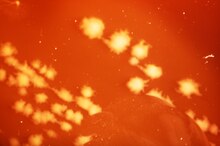Clostridium septicum
| Clostridium septicum | |
|---|---|
 |
|
| Scientific classification | |
| Domain: | Bacteria |
| Division: | Firmicutes |
| Class: | Clostridia |
| Order: | Clostridiales |
| Family: | Clostridiaceae |
| Genus: | Clostridium |
| Species: | C. septicum |
| Binomial name | |
|
Clostridium septicum |
|
Clostridium septicum is a gram positive, spore forming, obligate anaerobic bacterium.
Clostridium septicum can cause gas gangrene, but unlike other Clostridium species like Clostridium perfringens, no trauma is necessary at the site of the infection. It is thought that the infection is established by hematogenous spread from the gastrointestinal tract. Gas gangrene caused by Clostridium septicum is associated with colorectal cancer and other defects of the bowel.
Clostridium septicum causes myonecrosis through the release of exotoxins such as the alpha toxin, lethal toxin, and hemolytic toxin
C. septicum is a large, gram-positive, rod-shaped bacterium that is a member of the normal gut flora in humans as well as other animals.C. septicum are spore formers, with a terminal spore that gives them their drumstick-like shape. They are also motile bacteria, using peritrichous flagellae to navigate from one environment to the next.C. septicum are fermentative anaerobes and therefore can live off of a variety of substrates like sugars, amino acids and other organic compounds, generating molecular hydrogen gas and carbon dioxide as byproducts of cellular respiration.
Although non-pathogenic, C. septicum can cause infection quickly if the gut tissue becomes necrotic or inflamed.C. septicum produces four toxins; alpha, beta, gamma and delta, with alpha toxin being necrotic and lethal. Their anaerobic nature creates susceptibility in areas of decreased blood flow. Although rare, C. septicum infections are often found in individuals with a recent history of trauma, surgery, peripheral vascular disease, diabetes, colon cancer, skin infections or burns and septic abortions.
...
Wikipedia
